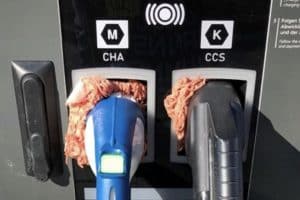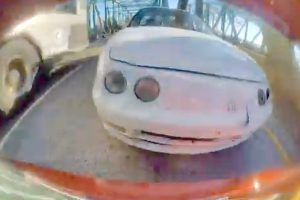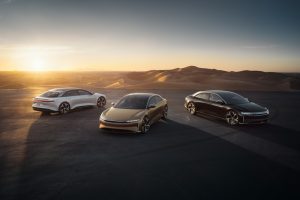My opinion of Tesla in recent years has been one hell of a roller-coaster ride. At first, I admired the company’s fast, innovative electric cars; then I grew to hate CEO Elon Musk’s constant Twitter shenanigans and nuclear takes on journalists and the media.
Then I drove a Model S, a Model X and a Model 3; the last one twice, actually, first a Standard Range, followed by a Performance model. I loved each one of them, mostly for what felt like cutting-edge technology, performance and a general sense of feeling different, the way Apple computers must have felt when they competed against the beige-box Windows PCs of the 1990s. Then, finally, I despised Tesla for inflicting owners with an innumerable amount of post-sales issues, including notoriously poor quality control.
I don’t know what’s worse between a paint job that peels off during the first winter, or door handles that refuse to operate properly during a cool Canadian morning; don’t even get me started on the infamous panel gaps.

This year, Tesla is back with its most important car possibly ever: the Model Y. It’s priced to sell in the ultra-important, ultra-popular, ultra-lucrative midsize crossover segment, smaller and cheaper than a Model X and without those problematic Falcon Doors. Unlike wild experiments like the forthcoming Cybertruck—if that even happens as-is—the Model Y is meant to be a major volume-seller, the car that keeps the bills paid. But it also needs to still be a Tesla, meaning fast, high-tech and a cut above all other EVs, long as you check expectations about quality at the normally-opening door.
Yet will the 2020 Tesla Model Y being plagued with build quality issues affect its desirability? Perhaps not. Because here’s the cold hard truth about Tesla: whether we like it or not, it’s still ahead of the curve. Way ahead. And the more I drive Tesla’s cars, the sadder I feel about the rest of the auto industry.
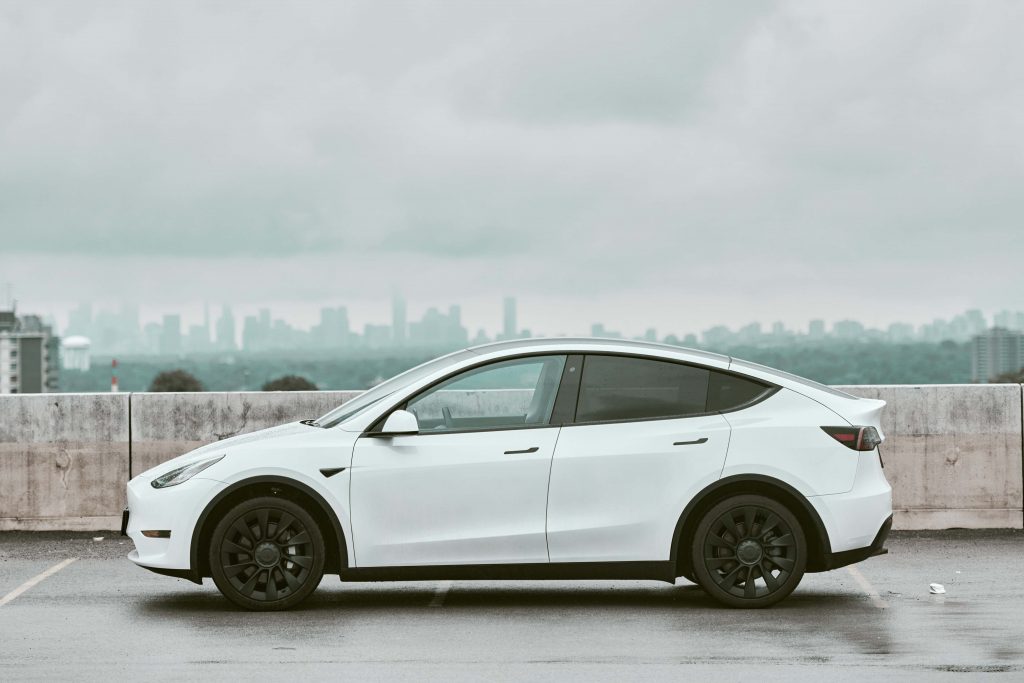
2020 Tesla Model Y: By The Numbers
- Base Price (as Tested): $43,690 ( $43,690 )
- Powertrain: Dual electric motor setup mounted on each axle, one permanent-magnet synchronous, one AC induction / 75 kWh battery
- Horsepower: 384 hp (286 kilowatts)
- Torque: 376 lb-ft
- 0-60 MPH: 4.7 seconds
- Top Speed: 136 mph (limited)
- Cargo Capacity: 68 cubic-feet rear with seats folded | 15 cubic-feet front (frunk)
- Quick Take: Still the most technological EV on sale, the most range in its class, the strangest EV on the market. Build quality remains an issue.
But Y?
The Model Y may share a platform and a lot of related parts with the Model 3, but it’s poised to strike hard in a segment that’ll start boiling anytime between now and next year. As I write this, the Model Y’s only rivals are the Jaguar I-Pace and Audi e-tron. But come this fall, the Ford Mustang Mach-E could give the Y a run for its money. Nissan then plans on deploying the promising Ariya later in 2021, and finally, Cadillac will join the party with the Lyriq sometime in 2023.
But why aren’t any of these models on the market yet? I’m asking the same question, which I’ll get back to in a bit.

To take them all on, the Model Y (across all its trim levels) is powered by a 75-kWh battery pack powering two axle-mounted electric motors. The rear one, which is the car’s main source of propulsion, is Tesla’s own Permanent Magnet Switched Reluctance type, a fancy term to describe permanent magnets that are located within the rotor itself. These are, basically, more efficient than most electric motors currently on the market.
The front motor is a more conventional induction-type layout—similar to what you get in a Chevrolet Bolt EV—providing high levels of torque at low speeds, but also more energy-hungry. This is why the Model Y is first and foremost rear-wheel-drive. The front motor kicks in only when you really need it.
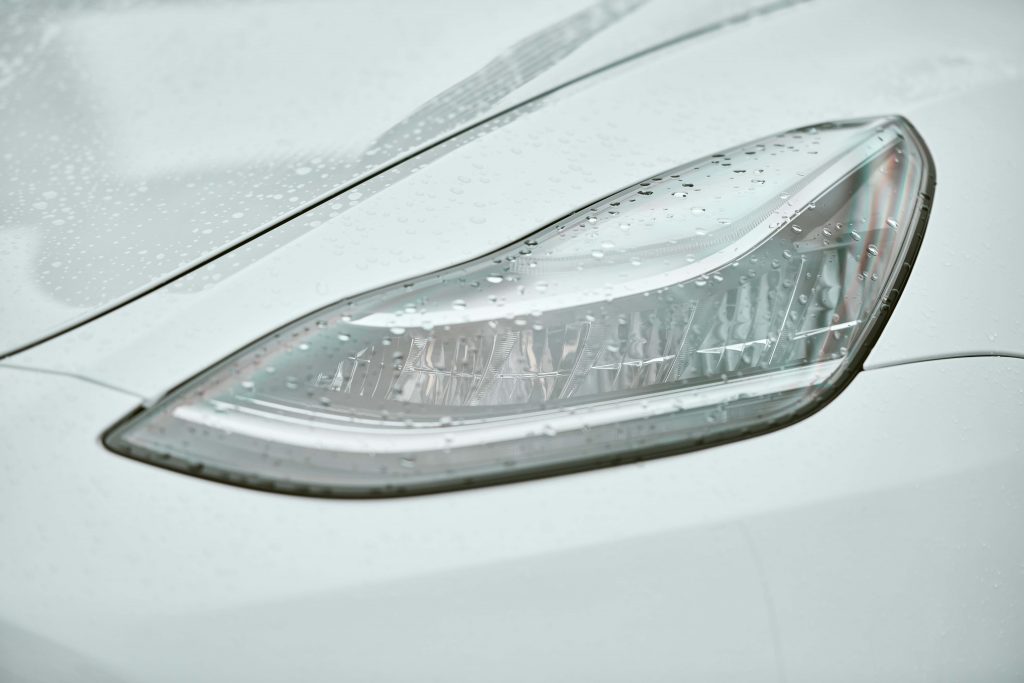
Total power output from this Dual Motor setup is rated at 286 kilowatts, or the equivalent of 384 horsepower and 376 lb-ft of torque. Tesla claims the entry-level Long-Range model (the one I tested) will hit zero to 60 mph in just under five seconds and that it will drive up to 310 miles on a single charge.
Such specifications pulverize both the Jaguar I-Pace (234 miles) and Audi e-tron (204 miles). Only the upcoming Mach-E with the extended range package has a chance to compete against this Tesla. Perhaps more impressive is the Model Y’s 3,500-pound towing rating, which is a first in this category of vehicles. However, you do need to tick off a $1,000 Tow Hitch option to get it.
Pricing for a 2020 Tesla Model Y kicks off at $43,690 USD (or $69,990 CAD) before applicable rebates, and will climb all the way to $53,690 USD for a much faster Performance model. Up here in Québec, where state-subsidized incentives are strong and EVs sell well, the Model Y is sadly not eligible for anything due to its high price tag.
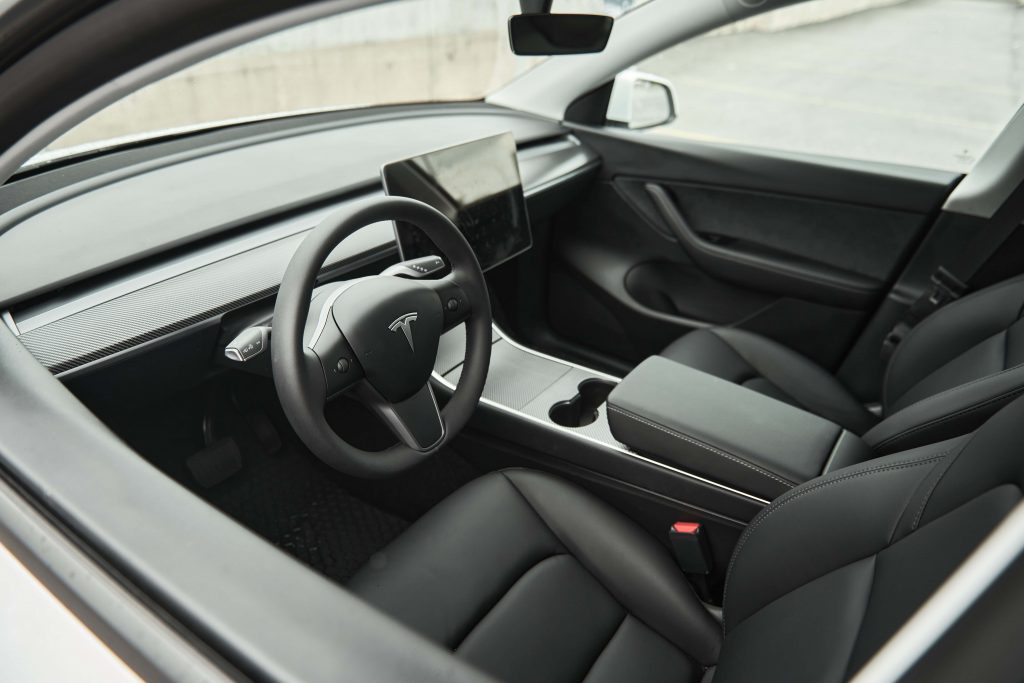
(In case you’re curious: In Canada, EVs need to be under a starting MSRP of $55,000 CAD to receive any rebates, up to $13,000 in total. These incentives currently only apply to more affordable EVs like the Tesla Model 3 Standard Range Plus, Chevrolet Bolt EV and other similarly priced models.)
Less 3 Than You’d Think
It would be safe to assume that the Model Y is basically a slightly lifted hatchback version of a Model 3 sedan. That observation is only half right. While it does ride on the Model 3’s platform, the Model Y’s wheelbase was stretched by half an inch, leading to a 2.2-inch overall length difference. The Y is also 2.8 inches wider than the sedan on which it’s based.
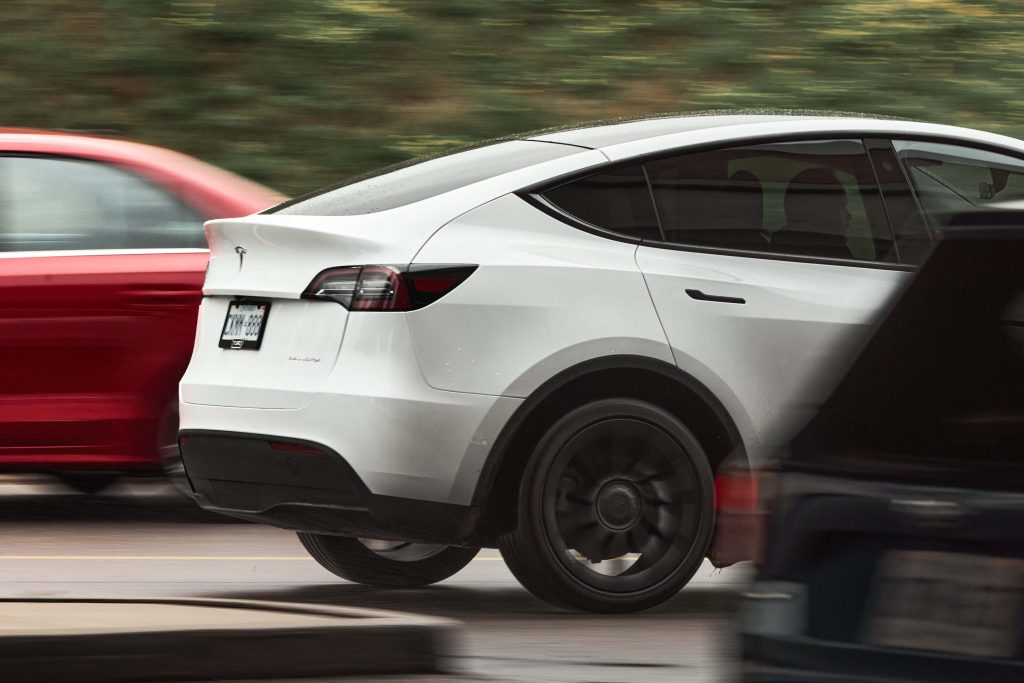
These dimensional changes, accompanied by the higher roofline and hatchback configuration, inevitably lead to a more spacious and practical cabin. Rear leg and headroom are no longer an issue like they can be in a Model 3, and total cargo space is rather spectacular, to say the least.
For reference, when the rear seatbacks are folded down, the Model Y will engulf up to 68 cubic feet of your gear. Add to that an extra 15 cubes upfront due to the frunk and Tesla’s crossover beats both the Jag I-Pace (50 cu-ft) and the Audi e-tron (54 cu-ft) in cargo capacity. Even the Ford Mustang Mach-E can’t match this at 59.6 cu-ft rear / 4.8 cu-ft front.

And while the Model Y is technically a five-seater, you can add a third row for a seven-seat interior. However, because the option costs $3,000, and that the seats themselves are tiny and eat up a fair amount of cargo space, I don’t recommend getting it.
Except for what I just mentioned above, there aren’t many available options for a Model Y. Your choice of interior colors is limited to black or white. Tesla does include the standard Autopilot automated driving assistance technology, with the Full Self-Driving Capability feature remaining an $8,000 option. My tester didn’t have that one ticked off, which meant it had driver assist technology and not actual, fully autonomous driving. A reminder: no car has that. The FSD option includes some features supposedly coming down the road. It’s your call if you have faith in that or not.
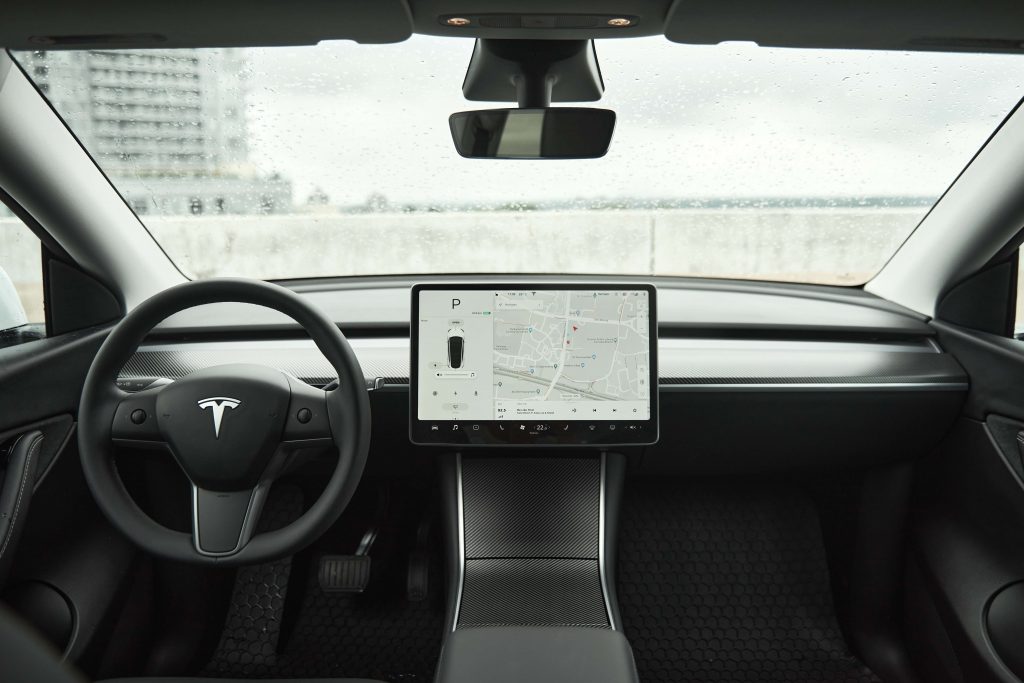
Come At Me, Muskbros
Before I move onto my driving impressions, I will say that I was just as disappointed by this thing’s overall build quality as the Model 3’s. Among the manufacturing issues I noticed on my tester, which I obtained through the Turo ride-sharing app, was a passenger-side headlight that wasn’t properly aligned, a rear bumper that didn’t quite tuck in the same way on both sides of the car, a rear hatch that had a wider door-to-body gap on one side than the other, and some rubber moldings that felt they had been installed as afterthoughts.

That the Model Y’s large center console is made out of cheap Dollarama-grade plastic is another huge letdown. Cabin noise was also very apparent during my drive, where squeaks and rattles kept disturbing the otherwise peaceful experience—it’s all especially more noticeable with no engine to drown it out. The Model Y’s interior feels downright cheaply made, especially when you compare it to what the Germans or even the South-Koreans manufacture in this price bracket.
Once strapped in, the now expected one-screen-controls-all setup stares at you robotically like HAL in the movie 2001: A Space Odyssey. In its defense, it’s a remarkably easy interface to comprehend. Granted, there is a learning curve, but the information isn’t cluttered like other systems, so it doesn’t take too much time to figure out where everything is.
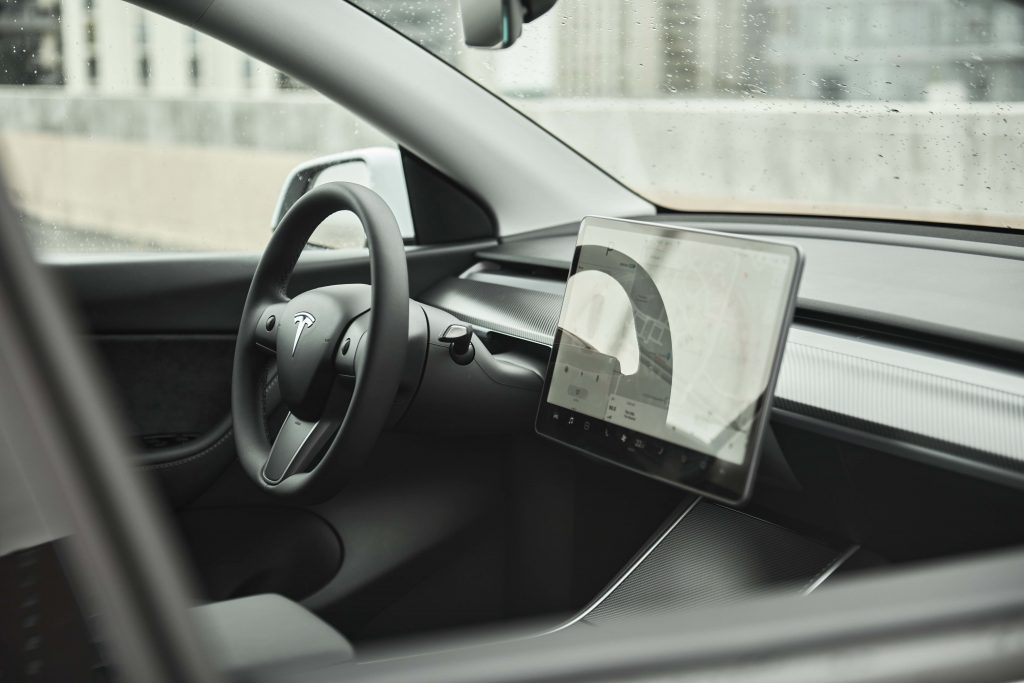
The screen also reacts quickly to your commands, the navigation map is clear and intuitive to use, and the overall interface is clean and attractive. I do feel Tesla’s latest vehicles deserve some physical controls, like mirror and steering wheel adjustments, or audio commands. Cycling through the screen to find them can at times be distracting, especially while driving.
I did however enjoy how the car’s dashcam switches on the moment you hunk the horn. It’s a handy feature that allows you to grab some footage of the douchebag who just scraped off your front bumper. Forward visibility is excellent due to the absence of, well, a dashboard. So is overall comfort, especially up front where the seats provide ample lateral and back support.

The rear seats are spacious, too, and offer ample head clearance for a big guy like me, but the seatbacks themselves are hard. You also sit upright back there. It is however possible to recline the seats, but they’re just never as comfortable as the ones upfront. The Model Y’s glass roof—which doesn’t open—gives way to a well-lit, airy cabin.
On The Road
When I say that Tesla is ahead of the competition, I don’t mean that it’s the first to market a 300-mile electric compact crossover. Or because it pioneered over-the-air software updates, an in-house fast-charging network or its own sales model that other car brands are just beginning to copy.
No, Tesla is ahead of the curve due to the way it drives and how utterly efficient its drivetrains are compared to other EVs out there.
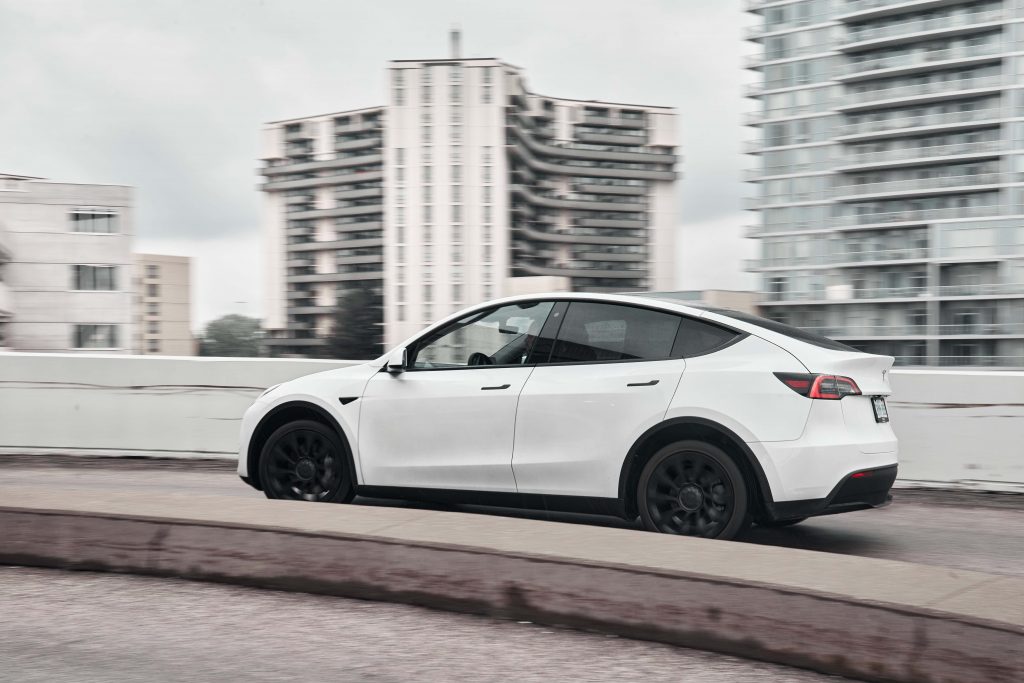
Driving the Model Y captures Tesla’s technological dominance by the way it performs and manages its range. Although the industry now offers a wide choice of compelling EVs, I remain impressed by how smooth and instant Tesla’s motors feel.
Unsurprisingly, the Model Y will launch itself out of the hole as fast as the best sports cars, but it’s the precision of its throttle pedal that’s truly astonishing. One simply needs to feather it for the vehicle to get up and go swiftly. It’s the kind of tactility that instantly infuses the driver with utmost confidence and control.
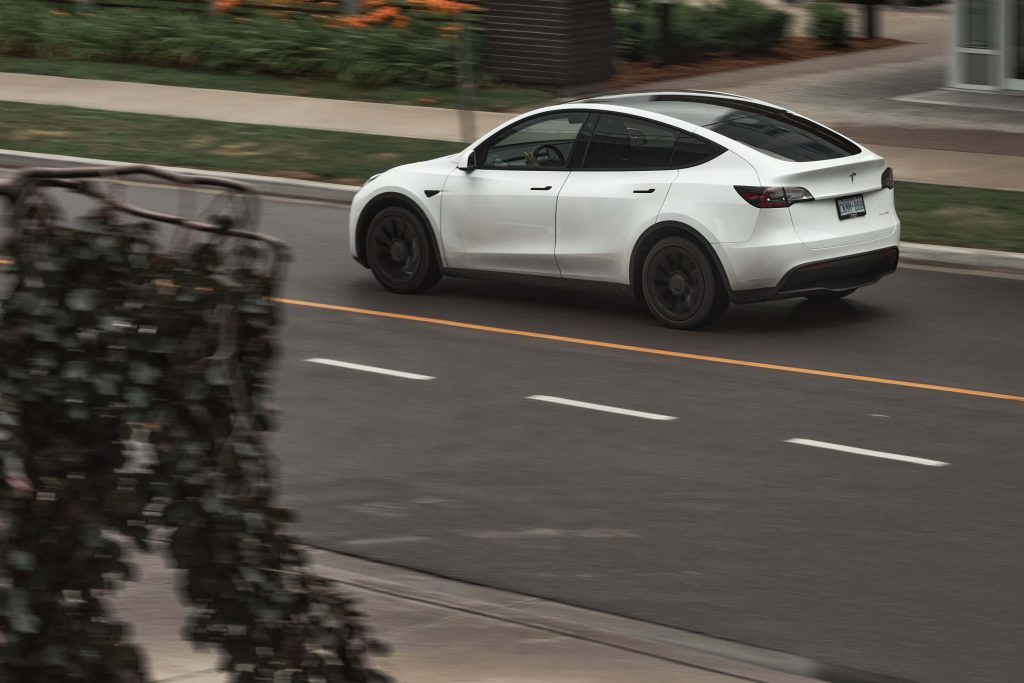
Releasing that pedal also unleashes Tesla’s excellent regenerative braking technology. While competing brands offer the possibility to modulate the recuperation system’s resistance, Tesla proves once more that two well-preconfigured settings suffice.
About the Tesla Supercharger network: I didn’t really need to use it given the amount of range the Model Y has at its disposal. But it is handy if your area isn’t fitted with an established public charging grid. Where I live, there’s a public charger on every street corner, so Superchargers are kind of irrelevant. But it will allow you to grab 158 miles of range within only 15 minutes, so there’s that.
That said, not having to rely on a charger was another realization that hit me hard as I blasted this compact crossover into highway onramps at speeds that would make a Porsche Macan Turbo blush: range anxiety is officially a thing of the past, folks. Battery technology is evolving so rapidly that we’ll soon get way more range than we actually need from an overnight charge. It’s a reality, that’s a lot closer than we think.
Anyway, back to the driving experience. The Model Y, even in its most basic form, is fast, smooth and efficient. But that’s all expected from a Tesla. What I wasn’t ready for was how well it handles.
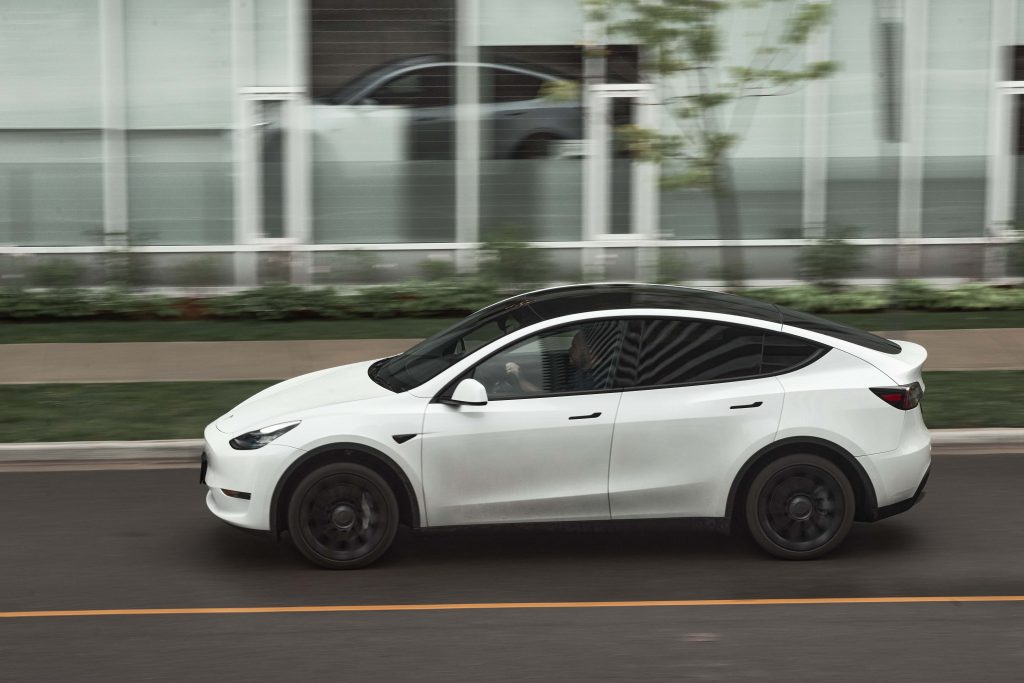
Modern electric cars, generally speaking, all handle well due to the heavy battery pack that’s located down beneath their floor. This allows for an ultra-low center of gravity and near-perfect weight distribution. But up until now, the driving dynamics of most EVs, except perhaps the Jaguar I-Pace—an EV I once drove on a track like a bat out of hell—or the Porsche Taycan all feel a bit stale.
The Model Y has a playful, tail-happy feel when it’s pushed hard to its limits. The Dual Motor setup somehow always prioritizes the rear motor, even though its original purpose was to be efficient and not performance-enhancing. Yet, it’s still willing to party.
What I mean is that there’s actual rotation happening back there, which allows the Model Y to wag its tail if you really commit upon corner exit. Yet, it’s all very easy to correct. The steering is as precise as a Playstation controller, the levels of grip are immense, and the front wheels instantly kick in to provide the required amount of grip. It all happens so effortlessly that even an inexperienced driver will find the confidence necessary to throw this thing hard into a corner without fear of understeering into a ditch.
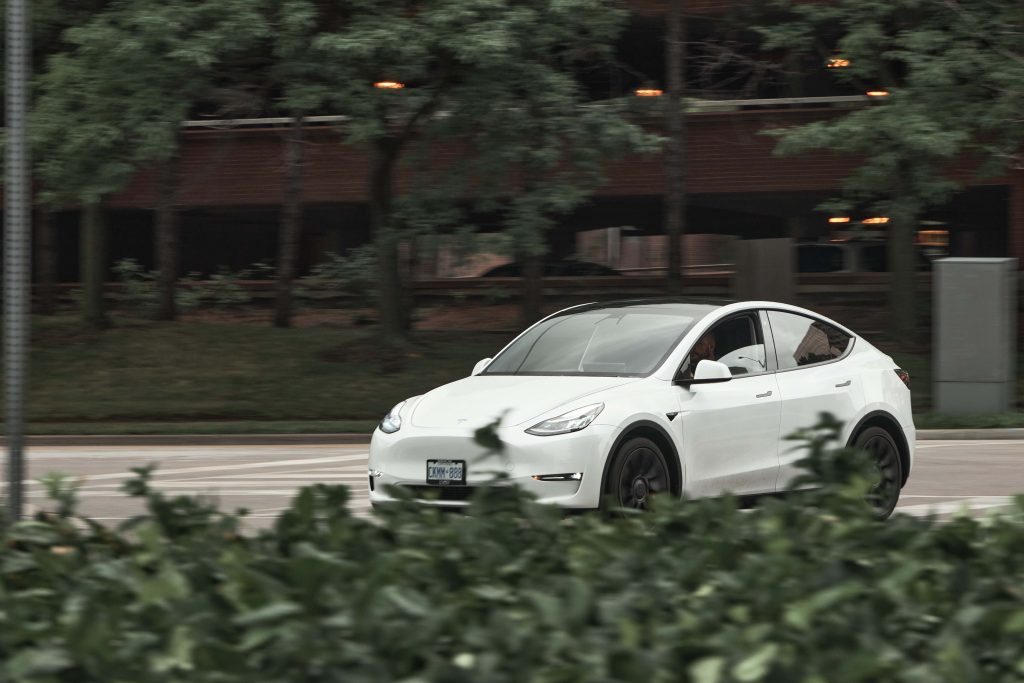
The Verdict
At this point, you’re probably wondering if the Tesla Model Y is worth your money. I’m going to say that yes, on many levels, this thing is worth every penny, even if it’s expensive.
But you also need to know what you’re getting into when buying a Tesla.
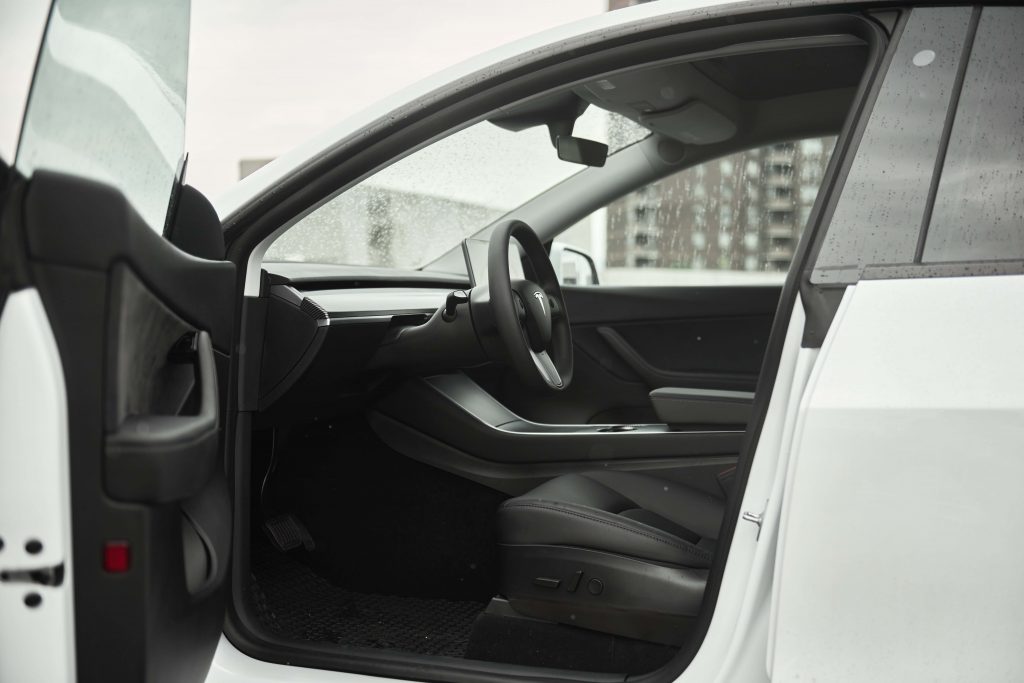
I say this because, in my immediate orbit, I know two Tesla Model 3 owners who are victims of bad paint, and Tesla is currently doing nothing to help them. Imagine the frustration of paying nearly 50 grand for a luxury sport sedan only to see it shed its skin the following spring.
I do hear, however, that Tesla’s aftersales service is improving, and that appointments with service rangers—essentially Tesla repair people who come straight to your home—are made quickly and without too much hassle. I hear they even fix panel gaps. But don’t expect Lexus levels of craftsmanship, here. Tesla still has a lot of homework to do in this regard.
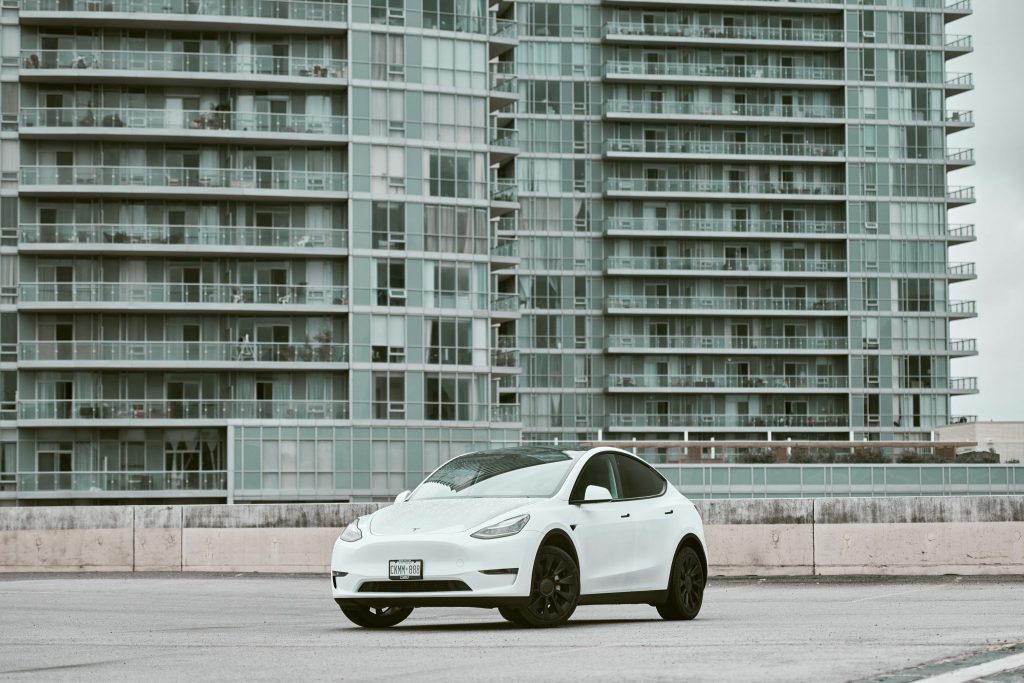
But the truth of the matter is that nobody, and I mean nobody, currently sells something that directly competes against a Model Y. And that’s a little worrying for the rest of the auto industry. The phrase “Tesla-killer” or “Tesla-fighter” has been common in headlines about legacy automakers and startups alike; still, no one has come at this king yet.
Perhaps Ford has a chance with the Mach-E. At least, on paper, it seems like a viable contender. But could it be too little too late? I mean, Tesla sold over 160,000 Model 3s in the US alone last year. Can this oddball Mustang be any sort of a volume-seller the way the Model Y is destined to be? I find that unlikely. But if anything, it’s only the start of things to come.
When Nissan unveiled the Ariya electric crossover last month, I remember saying “finally, something innovative from Nissan!” for the first time in years, but then I was highly disappointed by its release date of late 2021 on our market.
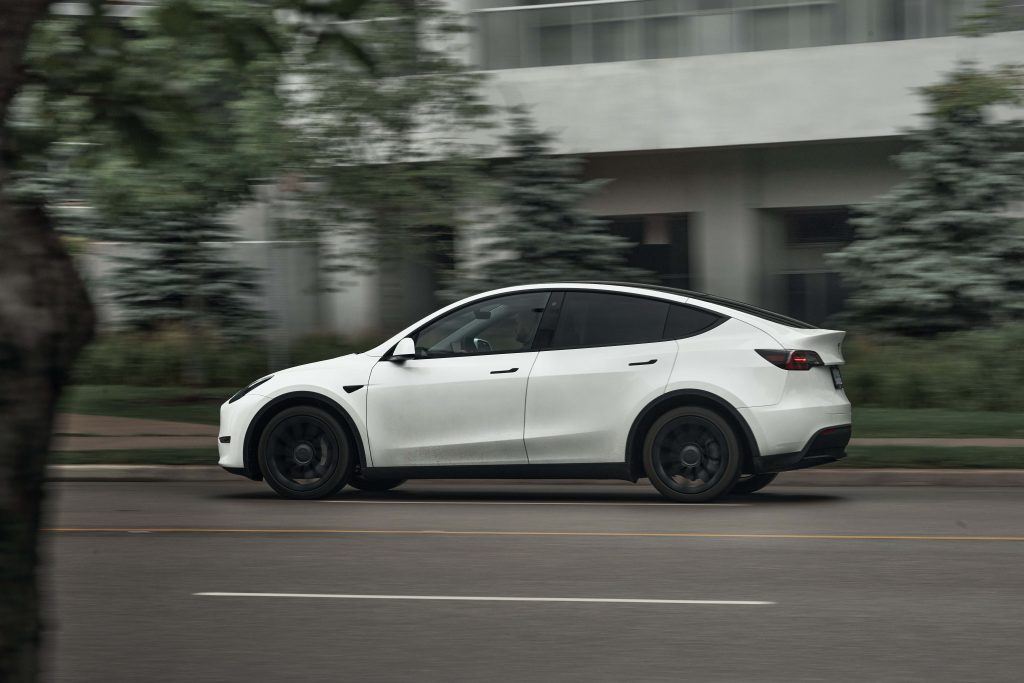
And don’t get me started on the Cadillac Lyriq. After months of shoving down our throats that its “innovative” Ultium battery would be the Android answer to Tesla’s Apple, GM unveiled an odd-looking concept car with unofficial range numbers and no actual specifications. Worse even was when Cadillac said all we’d only see the damn thing in the flesh in three years. Three years, GM. Really?
You see, what the entire auto industry needs to understand with its EV promises and shady concept cars is that Tesla is here now. Tesla is selling. And Tesla is ahead. And the more it waits before releasing its products, the harder it’ll be for them to take on what was not long ago just a little California startup.
Original Publication William Clavey at The Drive.
Want to buy a Tesla Model 3, Model Y, Model S, or Model X? Feel free to use my referral code to get some free Supercharging miles with your purchase: http://ts.la/guanyu3423
You can also get a $100 discount on Tesla Solar with that code. Let’s help accelerate the advent of a sustainable future.


